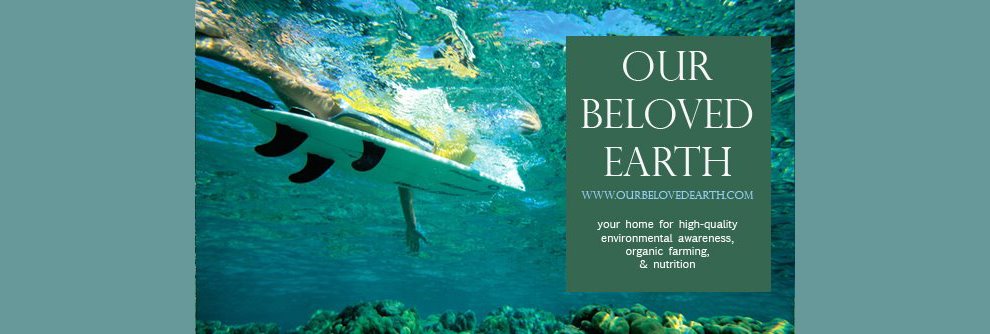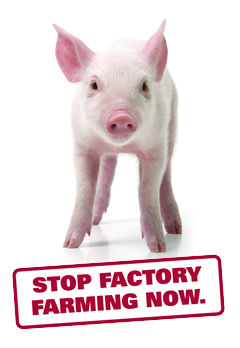Saturday, December 22, 2012
Thursday, November 29, 2012
More people are stepping up against factory farming!
In one of history's most stunning victories for humane farming, Australia's largest supermarket chain, Coles, will as of January 1 stop selling company branded pork and eggs from animals kept in factory farms. As an immediate result, 34,000 mother pigs will no longer be kept in stalls for long periods of their lives, and 350,000 hens will be freed from cages.
Not to be outdone, the nation's other dominant supermarket chain, Woolworths, has already begun phasing out factory farmed animal products. In fact all of Woolworth's house brand eggs are now cage-free, and by mid-2013 all of their pork will come from farmers who operate stall-free farms.
Coles and Woolworths together account for a dominant 80 percent of all supermarket sales in Australia.
The move to open up the cages was fueled by "consumer sentiment,"... Please read all the incredible details & see more links of information here: http://www.alternet.org/food/good-news-animal-lovers-factory-farmings-days-may-be-numbered?akid=9733.53075.snK4Kx&rd=1&src=newsletter752025&t=11
Not to be outdone, the nation's other dominant supermarket chain, Woolworths, has already begun phasing out factory farmed animal products. In fact all of Woolworth's house brand eggs are now cage-free, and by mid-2013 all of their pork will come from farmers who operate stall-free farms.
Coles and Woolworths together account for a dominant 80 percent of all supermarket sales in Australia.
The move to open up the cages was fueled by "consumer sentiment,"... Please read all the incredible details & see more links of information here: http://www.alternet.org/food/good-news-animal-lovers-factory-farmings-days-may-be-numbered?akid=9733.53075.snK4Kx&rd=1&src=newsletter752025&t=11
Study Finds Most Pork Contaminated
Recent Consumer Reports research found that 69% of raw pork products have been found to contain the bacteria Yersinia enterocolitica. According to an article by Alyssa Newcomb (link to article below), over 100,000 Americans get sick from from this bacteria each year (bloody stools, diarrhea, fever, cramps). For each reported case, there may be 120 or more unreported cases. So, the numbers of infection are high. 11% also contained other enterococcus bacteria strains. 4% contained Salmonella and Listeria strains, also. It is very important that you thoroughly cook meat. In addition, thoroughly wash any utensils or plates that come into contact with raw meat. [Personal note: my highest recommendation is to abstain from eating meat. Good for the planet, for the animals, and for you.] For more information, see: Study Finds Most Pork Contaminated. For the actual study by Consumer Reports, see: What's in that pork?
Wednesday, November 28, 2012
Hawaiian corals dying more every month!!
Growth attacking, killing Hawaiian corals
A mysterious growth has been spreading in Hawaiian waters, killing all the coral it strikes, and scientists say they can't stop it.
The white growth has been spreading rapidly across coral reefs in bays on Kauai's north shore, affecting up to 40 percent of the coral in some bays.
Other areas are "just as bad, if not worse," biologist Terry Lilley, who has been observing the phenomenon, told the Los Angeles Times.
Scientists at the U.S. Geological Survey say the growth has been identified as both a cyanobacterial pathogen, a bacteria that grows through photosynthesis, and a fungus.
Deadly to coral it strikes, the invader is moving at the rate of 1 to 3 inches a week on every area of infected coral, scientists said.
"There is nowhere we know of in the entire world where an entire reef system for 60 miles has been compromised in one fell swoop," Lilley said. "This bacteria has been killing some of these 50- to 100-year-old corals in less than eight weeks.
"Something is causing the entire reef system here in Kauai to lose its immune system."
Experts said there is little they can do to stop the threat.
"It's very alarming," Wendy Wiltse with the Environmental Protection Agency in Honolulu said. "All of us are concerned about it. We want to do more. Part of the problem is we don't know what to do, especially in the case of a disease that's spread by a pathogen. It's not like we can put antibiotics in the ocean."
The white growth has been spreading rapidly across coral reefs in bays on Kauai's north shore, affecting up to 40 percent of the coral in some bays.
Other areas are "just as bad, if not worse," biologist Terry Lilley, who has been observing the phenomenon, told the Los Angeles Times.
Scientists at the U.S. Geological Survey say the growth has been identified as both a cyanobacterial pathogen, a bacteria that grows through photosynthesis, and a fungus.
Deadly to coral it strikes, the invader is moving at the rate of 1 to 3 inches a week on every area of infected coral, scientists said.
"There is nowhere we know of in the entire world where an entire reef system for 60 miles has been compromised in one fell swoop," Lilley said. "This bacteria has been killing some of these 50- to 100-year-old corals in less than eight weeks.
"Something is causing the entire reef system here in Kauai to lose its immune system."
Experts said there is little they can do to stop the threat.
Saturday, March 31, 2012
Octopus Reproduction
Heather Ylitalo-Ward, a PhD candidate at University of Hawaii Manoa, shared with us a fascinating glimpse into the world of cephalopod reproduction.
2. In HI waters, there exist 19 known species of octopus.
The few that are described here are common in Hawaiian waters...

d has a symbiotic relationship with the bacterium Vibrio fischeri which makes them glow. This helps them to hide from predators. When they swim at night, near the surface, they glow like the moonlight. Predators swimming below them then cannot see them. This helps to protect them.






Here are a few of the interesting things she shared:
1. "OCTOPI" is incorrect. The plural form of octopus is OCTOPUSES.
2. In HI waters, there exist 19 known species of octopus.
The few that are described here are common in Hawaiian waters...

3. The Bobtail Squi
d has a symbiotic relationship with the bacterium Vibrio fischeri which makes them glow. This helps them to hide from predators. When they swim at night, near the surface, they glow like the moonlight. Predators swimming below them then cannot see them. This helps to protect them.

4. The Day Octopus can lay up to 700,000 eggs. Their color and texture can change to help them camouflage themselves. Their cells contain
chromatophore pigments, and they can control each cell's color
individually.
5. Night Octopus

These are pinkish in color with rows of white dots down their tentacles.
They live in shallow waters and legs can reach 2 m long.
6. Rock Tako

These live in tidepools.
At night, they emerge from the water and hunt for crabs.
The head is 8 cm; legs reach 12 cm.
7. Paper Nautilus

These are actually a form of octopus. The females create a "paper" like shell around themselves for protection, but they can remove the shell.
They live in open oceans. They live near the surfaces.
The males have no shell.
They ride on jellyfishes.
Extreme sexual dimorphism: females are 100mm long; males 20 mm long.
8. Blanket Octopus

Live in open oceans.
When young, they carry tentacles of man-of-war around themselves to protect themselves from predators.
9. Big Fin Reef Squid

These are prevalent in shallow waters.
Males and females are equal in size, about 33 cm at full length.
These are the "calamari" that people eat.
They mate rapidly.
CEPHALOPOD REPRODUCTION
The male has one arm that is larger than the others - the "hectocotylus."
In reproduction, the male attempts to place the end of this arm into the female's vaginal pocket.
He then delivers "sperm packets" (as many as possible, one by one) into the female.
For the first packet, he reaches his arm into himself and selects the packet. He then places it into the female.
Subsequent packets slide down the arm into the female.
She stores them. She can store packets from multiple males in different pockets.
She can choose (seen once) to select and remove particular packets.
Cuttlefish mate mouth to mouth.
She has a pocket in her mouth for storing the sperm.
The male first sprays her mouth with water to remove other males' sperm, and then deposits his own.
The paper nautilus and certain other species actually have an arm that detaches from his body and swims on its own over to the female to deposit the sperm. He dies when his arm detaches, and he hopes that the arm reaches the female.
The Blanket Octopus also has an arm that detaches and crawls into the female.
The Reef Squid also mates mouth to mouth or side by side. They lay egg cases.
Here is a National Geographic clip of octopus reproduction: http://www.youtube.com/watch?v=4fkQZrfeYXQ
Saturday, March 10, 2012
Interesting fact...
In the age of the Samurai, the warriors adorned themselves in sting ray leather as armor, believing it to be impenetrable.
Subscribe to:
Posts (Atom)


















